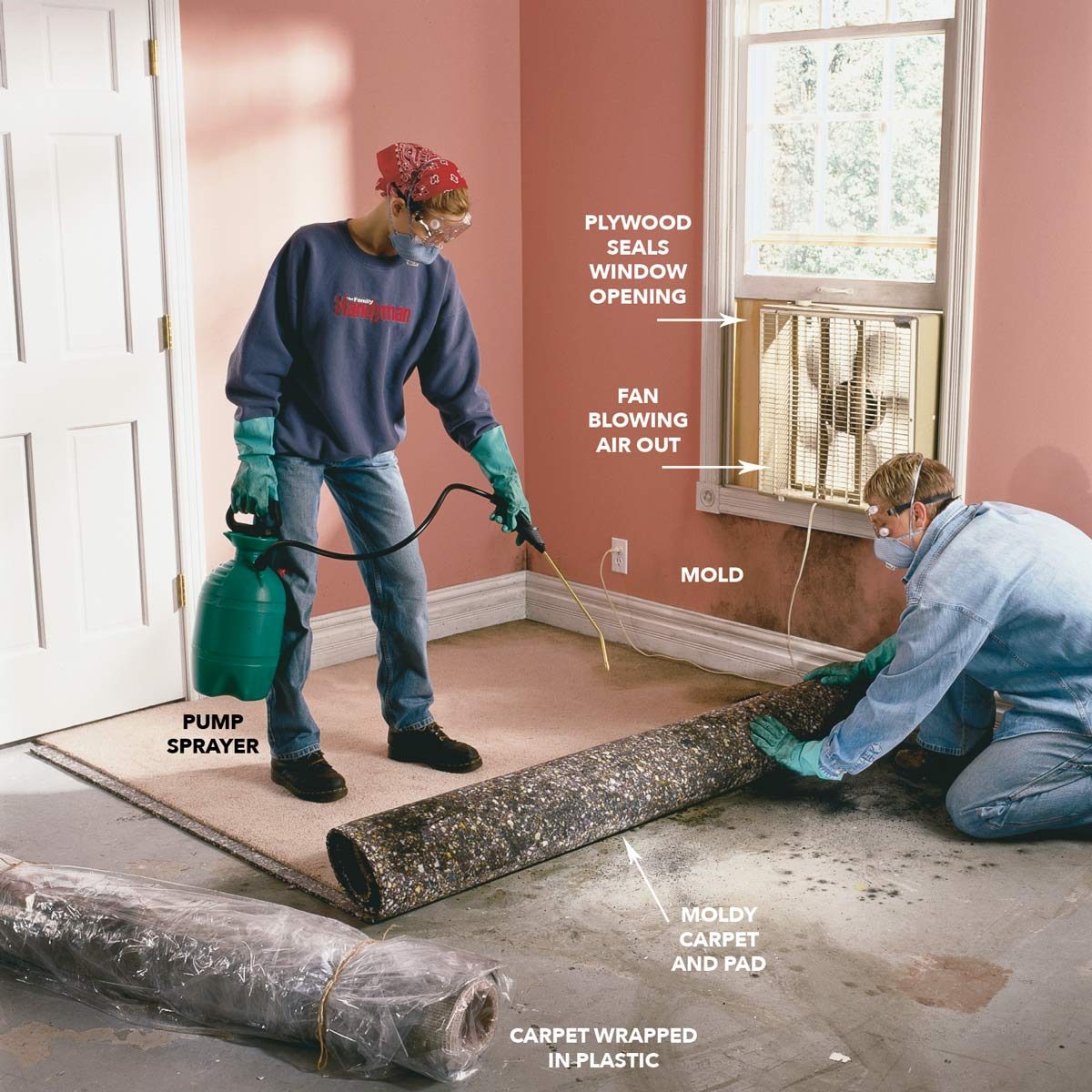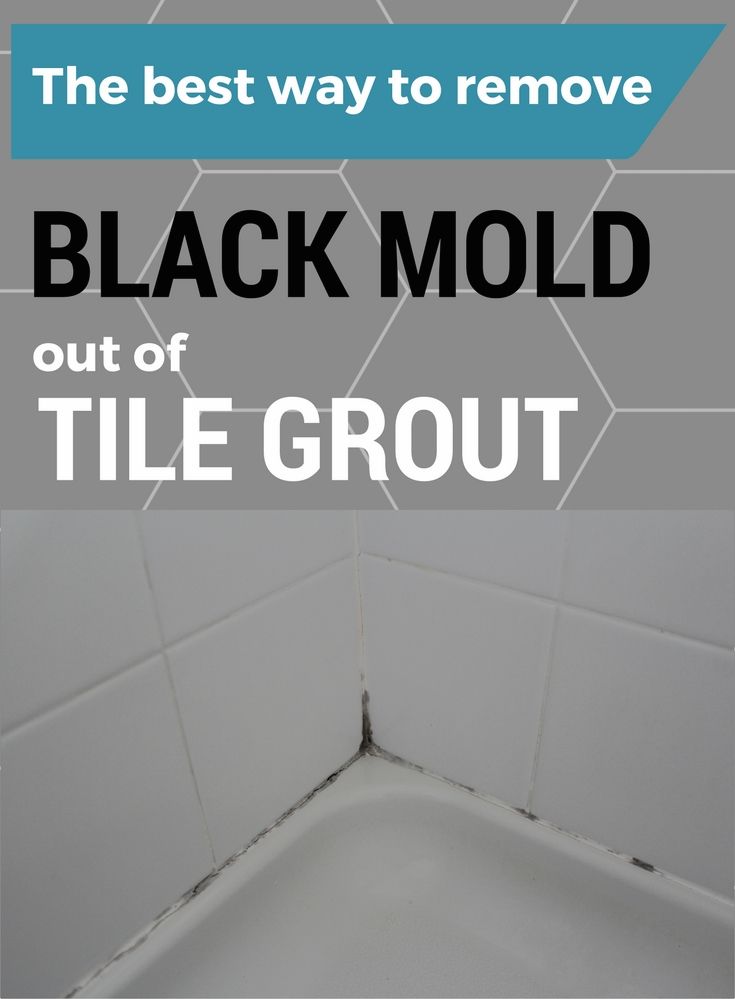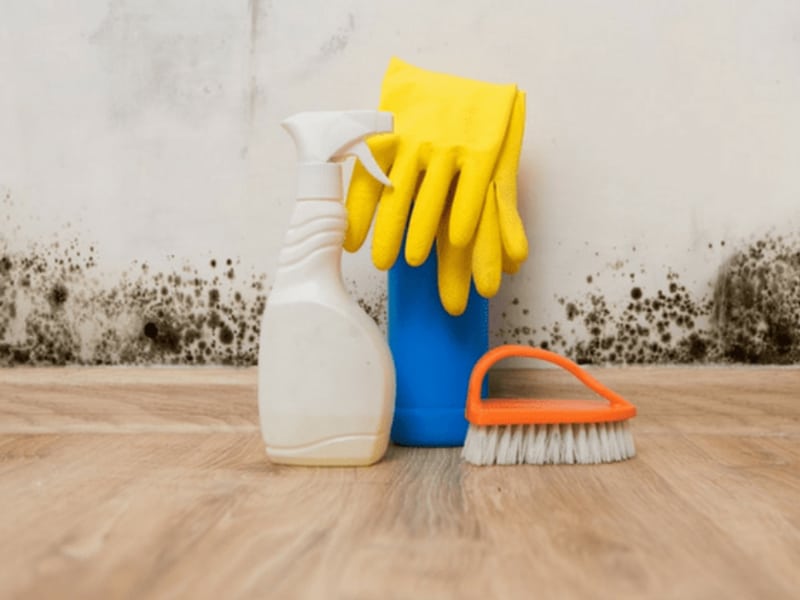How To Remove Mold From Concrete
The good news is removing black mold on concrete surfaces is fairly easy and straightforward. The main difficulty in removing the mold is the potential health hazards. Mold reproduces through spores released into the air, making it necessary to take precaution when cleaning the surface. Although some household molds will only irritate allergies, black mold can be very dangerous and cause severe health conditions. Removing black mold is just like any other form, it just requires extra care. Its recommended that you start with the minimum protective gear, such as a mask and heavy-duty gloves. It also requires an N-95 respirator to protect you from spores and goggles. This gear is recommended by the EPA when cleaning mold and will protect you from any spores released into the air.
Costs Of Hiring A Professional To Get Rid Of Mold On Floor Joists In A Crawl Space
Hiring a professional to remove mold in your crawl space can cost you thousands of dollars. If not, tens of thousands of dollars, depending on your situation.
Since the fungus is in your floor joists, an expert cannot remove it without a contractor. Your floor joists provide structure to your home.
Therefore, any mold issues in the formation of your home would need to be assessed by a contractor. This is a liability precaution that professional mold removers take.
If its a small job, it may cost around $500. Maybe thats ideal for you. If so, go ahead! Its always better to be safe than sorry.
Also, keep in mind, even if you opt to do the job yourself, youll face some expenses. You will need to buy mold removal products, cleaning equipment, safety gear, and other supplies. So, if you were to do the job yourself, it would cost anywhere from $80 to $500 depending on your materials cost.
However, there have been cases where professional mold remediation has cost up to $30,000. Of course, this number represents a more extreme case, but it still takes a big bite out of the budget.
Why Does Subfloor Mold Develop
Subfloor mold usually develops due to an undetected moisture intrusion between the different layers of flooring, especially when the finish flooring is sheet vinyl, laminate flooring, or ceramic tile. I say especially only because if your flooring is carpet, the moisture is much more apparent and quickly and easily discovered.
Unwanted moisture can originate from many different sources such as a slow supply line leak on a faucet or toilet. Another common, and usually harder to determine source of excess subfloor moisture, is a faulty wax ring seal under a toilet that allows water to escape from drainpipes and affect the subflooring. Anytime you have warm temperatures , a source of water, and organic food materials like plywood or OSB, it is possible for mold to develop.
Recommended Reading: Bathroom Ceiling Mould
How To Deep Clean Linoleum Floors
Linoleum made its first appearance in the marketplace in the 1860s, and although the popularity of this durable, environmentally friendly, hypoallergenic product has fluctuated over the years, it can be found in many homes and businesses around the country today. With proper care and maintenance, a linoleum floor can withstand decades of use, while the endless variety of colors and patterns make it suitable for every room in your home. Enhance the beauty and longevity of this versatile material with these tips from Molly Maid, for the best way to clean linoleum floors.
What is Linoleum?
Although many people use the terms linoleum and vinyl interchangeably, the two products are vastly different in composition and performance. The key ingredient in linoleum is linseed oil, and once it has been allowed to oxidize other materials such as pine resin, wood flour, or ground cork dust are added to make the finished product. This mixture is applied to a canvas or jute backing, and sheets or tiles are formed for commercial and residential use.
The Benefits of Linoleum Flooring
In addition to its exceptionally long lifespan, linoleum has a host of additional benefits, including:
- Comfort
Natural cushioning provides the perfect blend of give and support, unlike ceramic or stone tiles which can be hard on the back and joints.
- Durability
Remove Moldy Material If Possible

If the mold has damaged a small area of soft or fibrous material like carpet, ceiling tiles, or wall material thats not load-bearing , you can remove the material yourself and replace it. Just be sure to wear protective eyewear and disposable dust masks, gloves, and possibly protective clothing so you can ensure youre not bringing the mold into your living spaces.
Also Check: How To Clean Mold On Bathroom Ceiling
Dry Out The Affected Area
Mold thrives on moisture, so you need to make sure the area is dry. If you dont, the mold can spread its spores in the air. This will make it harder for you to clean, and it might cause an allergic reaction.
Try to expose the area to direct sunlight to dry it out. If you cant, use a fan or heater thats made for the outdoors.
What To Do If Mold Persists
If the mold stains still remain, the wood surface will need to be sanded to remove the spores that have deeply penetrated the wood. If you are not familiar with wood sanding or refinishing, ask questions at a home improvement store about the right sandpaper grit to use for your situation. After sanding and vacuuming away all of the grit, the wood should be refinished or sealed to help prevent future damage.
The Spruce / Georgia Lloyd
Read Also: How To Get Mold Spots Off Bathroom Ceiling
Learn Why White Vinegar Removes Mold Better Than Bleach
Vinegar is a bold mold killer. According to ServiceMaster Restoration and Cleaning, the mild acid in vinegar kills about 82% of known molds and can help prevent future outbreaks.
You can clean small amounts of mold with vinegar yourself, but know when to call professionals. Besides a crisis, such as a flooded home, the Environmental Protection Agency advises hiring professionals when the moldy patch covers about 10 square feet or larger.
In this video, learn more about mold remediation from out senior editor, Brad Holden.
Black Mold On Floor Joists
If you pull up the flooring, the issue presents itself as a greenish-black gelatinous material. When wet, it can appear to be gooey. When it runs out of a water source, it can appear powdery and black.
Joists are just one portion of the floor that can contain black mold. If you gently pry up the flooring and notice black mold on the joists, you will need to remove it right away. Since spreading can be an issue on the joists, assistance from a professional may be beneficial.
Don’t Miss: How To Get Mold Off A Bathroom Ceiling
Cleaning The Surface Mold
Even when surface mold is not widespread, you want to ensure you clean all the affected areas to prevent a recurrence. It is relatively easy to remove mold from the surface. Using the spray bottle, spray the cleaner or bleach solution on the affected area. Leave it to sit for 10 minutes. You can then wipe off the mold with a rag. If there is stubborn black mold on the wood floor, you can use a firm scrubbing brush to remove it. Throw away the rag that you use.
When removing the mold, do not leave the bleach on the surface longer than necessary. It will remove the wood finish. Also, be careful when handling the solution to avoid contact from the uninfected areas.
How To Identify Black Mold Under Flooring
There can be key indicators that moldy areas are growing inside of your home. A huge telltale sign is when a room in the home has a musty smell. If you notice this happening in one specific area, this can be a cue to check the room for traces of it.
This is especially true if you notice an area with visible signs of water damage. If there is a scent of mustiness accompanied by water damage, you may need to look deeper than the surface to discover the source.
Recommended read: How to identify black mold
You May Like: Clean Mildew Off Ceiling
Cleaning Red Stain On Linoleum Floor:
Sometimes red stains like cherry, raspberry, or cranberry juice occur on the linoleum floor. Apply hydrogen peroxide fluid on the stained area, wait 10 minutes to sit fluid. After that wipe down the stain with warm water, if red stain not an artificial stain definitely remove while applying hydrogen peroxide fluid.
How To Clean Mold Off Wood The Easy Way In 6 Simple Steps

Mold can be a huge problem for homeowners, especially during the winter months when the windows are closed and moisture accumulates. If you have mold on your wood furniture or flooring, dont worry were here to help!
This blog post will teach you how to clean mold off wood in a few easy steps. Well also provide tips and tricks to make the job easier and more effective.
You May Like: How To Keep Mold Off Bathroom Ceiling
Why Does Black Mold On Floors Grow
It can be tricky to find, as it can grow on subflooring and joists. This means it can grow under carpets, tiles and other types of flooring which can be difficult to spot. It requires a moist environment to grow and thrive, thus it will be in areas that experience moisture. This can include kitchens and bathrooms.
Since it grows from spores, once inside of your home, these spores gravitate toward these naturally damp areas. After they have established a favorable area to grow, it can then spread. Spores are tiny, airborne reproductive cells that mimic the function of seeds. If they are stirred up, they can travel to other areas.
How To Remove Mold With Vinegar
Vinegar is natural and safe mild acid that can kill 82% of mold species. Plus it doesnt give off dangerous fumes like bleach. If you want to use vinegar to prevent mold growth on surfaces, spray vinegar on the surface and leave it. Repeat every few days to keep the surface mold-free.
How to Use Vinegar
Recommended Reading: Removing Mold From Shower Ceiling
Locate And Clean The Problem Area
You will need to mix your white vinegar and water. . Put it in your spray bottle, and you are ready to go.
Now that you have all the tools that you need, its time to get to work. Gather your supplies and head into your crawl space with your devices in hand. It would be a good idea to put these in a bag. As you crawl, you can pull it next to you.
Before you do anything, you will want to spray your problem area with your vinegar mixture. Make sure the area is soaked and that you use the mist setting.
If you use the stream setting, you could scatter the mold spores. Dispersed mold spores can put your health at risk if you are not appropriately protected. After you spray the mold with the vinegar solution, wipe it down.
It would be a wise idea to bring someone with you to assist you. You can also use a putty knife to scrape away large visible mold spores into a trash bag.
Leaving Stains On Some Wood Surfaces Is Harmless Or Of Cosmetic Significance Only
If an exposed flooring surface remains stained even after surface mold has been removed, you will need to sand that surface – a step typically performed after the flooring has been installed.
While in general we recommend against using bleach as a substitute for proper mold cleanups we have successfully used bleach to remove stains in wood floors before re-finishing the exposed wood surface. Be sure that all bleach or any other cleaning has been thoroughly removed before re-finishing a floor.
Media blasting can also produce a very clean wood surface with minimum damage to the wood. But be careful: inexpert use of any power-blasting or power washing method for cleaning wood can leave a raised wood grain and a very uneven surface that would be unacceptable for finishing on an interior wood floor surface.
Stains that might remain on the flooring underside will be of no cosmetic import and as long as the floor is installed indoors and not exposed to water or high moisture, mold growth should not be a problem.
Recommended Reading: Mold On Hot Tub Cover
Removing Mold With Ammonia
Similar to bleach, ammonia will kill mold on hard non-porous surfaces which include countertops, glass or tiles but it is not effective at killing mold on porous surfaces such as wood or drywall. Additionally, ammonia is a harsh, toxic chemical. While ammonia can kill surface mold, dead mold and dead mold spores are still allergenic so you would need to make sure to remove them as well.
What To Do If The Mold Still Exists
If the mold still exists, its time to contact a professional. A removal expert can easily deal with any restoration or repair work needed on your home.
Mold is a dangerous substance and, if left untreated, could lead to serious health problems for you and your family members. This means that you must call in an outside party who knows how to quickly remove black mold from wood floors before it spreads further into other areas within your house where everyone will be exposed to them, including yourself!
So, what are you waiting for? Get in touch with moldtesters561 now to get a free consultation from our mold testing specialists before its too late. We are offering mold inspection in Boca Raton. Call us Now!
Read Also: Clean Mold Off Basement Walls
How To Prevent Mold On Concrete
Preventing black mold from entering your home is fairly straightforward, although it requires staying on top of the situation. Because fungus loves to flourish on damp areas, make sure rooms with regular water exposure like the kitchen and bathroom are well-ventilated. Dehumidifiers are helpful is small rooms with high humidity levels. Always check for leaking pipes as well, which are a major cause of household mold. Preventing mold in the basement is a bit trickier. Youll need to make sure ground water runs away from your home to prevent it from collecting near the basement. Check that sprinklers and downspouts arent depositing water near the basement walls or windows. Prevent condensation on basement water pipes by wrapping them. Use an exhaust fan in the bathrooms of your home after showering. Finally, keep the humidity in your basement below 60%. Running a dehumidifier downstairs may be your only option if you live in an area with high humidity.
How To Remove Mold From Inside Walls

The inside of your walls is a great environment for mold, but a terrible one for you to find and clean. Often homeowners dont realize there is mold inside their walls until its causing a major problem. Warning signs include an earthy, musty odor in the home, allergy symptoms that clear up when you leave the property, and stains or dampness on the wall itself. If mold does get inside your walls, youll probably need a pro to handle it. At the very least, the drywall has to come down in order to properly access and treat the mold and prevent it from coming back. You can mitigate the damage by looking out for the warning signs, and reducing the humidity in your property.
Also Check: Stair Nose Molding For Vinyl Plank Flooring
Removing Mold From Different Surfaces
Once the root cause of the mold has been dealt with, its time to address the visible mold itself. Often the infestation is worse than can be seen with the naked eye, so its important to do more than wipe mold off surfaces and hope for the best. The mold you see is the spores or fruiting body of the fungus, but often the hidden roots survive a first attempt at removal and the mold comes back. Heres how to remove mold for good, wherever you find it in your property.
Before you start: Make sure to ventilate the work area properly, and wear appropriate personal protective equipment to protect against mold spores that will be disturbed when you begin working. Gloves, safety glasses, and an N95 or better mask are all essential. Wear a long sleeved shirt and pants to avoid getting spores on your skin. Try to close off the area from other rooms to prevent spores from spreading throughout your home, and consider renting a HEPA air filter.
Pro Tip: The EPA recommends only removing mold yourself if it covers an area less than 10 square feet. Any larger than that and you need to call in the pros.
Remove From Hardwood Floors
Before you begin treating hardwood, you will want to make sure the wood is completely dry. Drying will help you during cleaning and prevent further growth.
If it has penetrated the wood or is deeply engrained in the hardwood, you will want to use a scarping tool or heavy sandpaper to remove it.
If the hardwood hasnât been penetrated, you can use vinegar and water, soap and water, bleach and water or another household solution to kill it. Hardwood can be affected by heavy chemicals, so do be mindful.
Recommended Reading: Best Way To Clean Mold Off Ceiling
